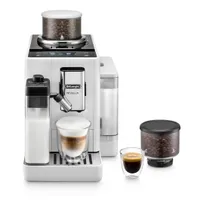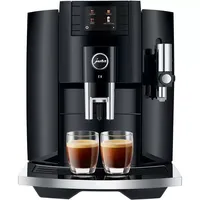Jura vs De’Longhi: which bean-to-cup coffee maker should you buy?
Both Jura and De'Longhi are big name brands in the world of superautomatic coffee makers. Here's how to decide which is right for you.
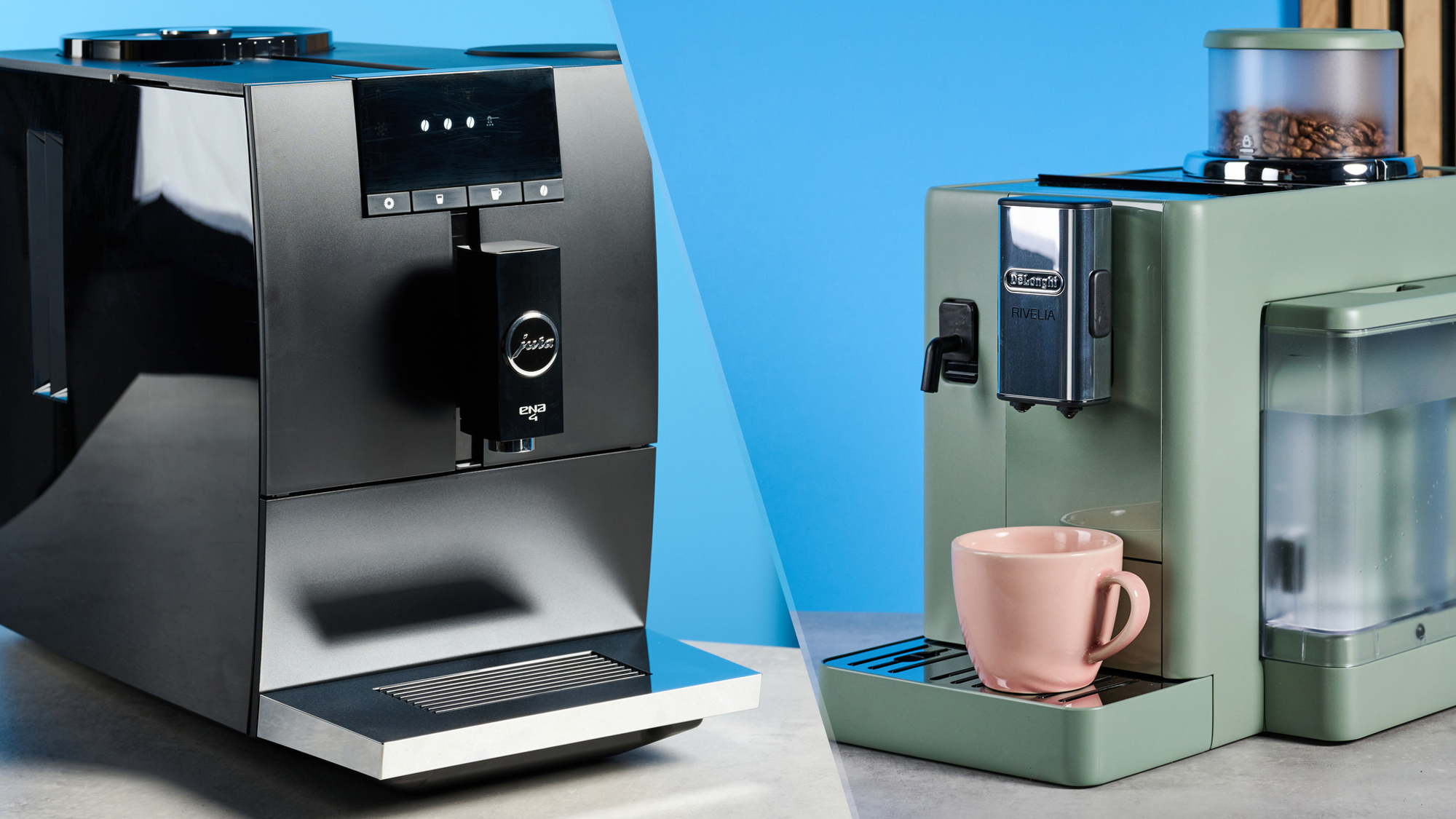
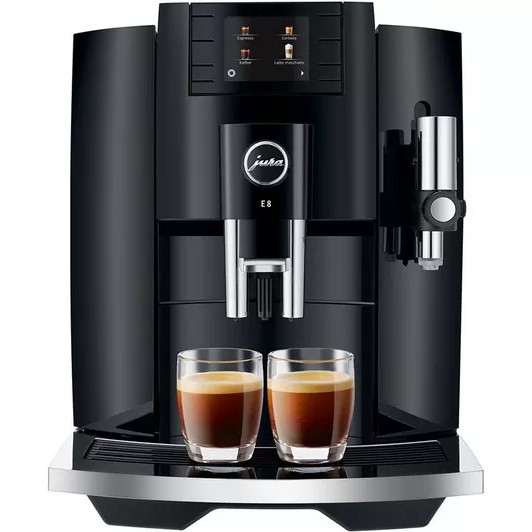
The Jura E8 is our pick if you want the most consistent one-touch espresso and milk drinks in a premium design, with features that hit the sweet spot without paying flagship money.
Pros
- Fast heat-up and back-to-back drinks
- Espresso is consistently well-balanced
- Adjustable strength and volume per drink
- Guided cleaning keeps upkeep simple
Cons
- The milk carafe is not included
- Very expensive in the U.S.
- No true control over milk texture
- Uses a lot of water for rinses
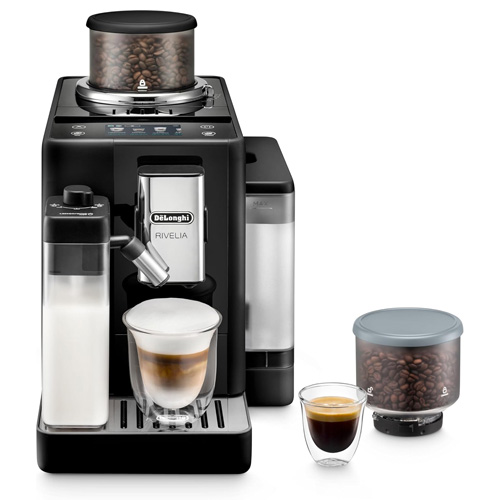
The De’Longhi Rivelia is the best-value alternative if you want a modern superautomatic espresso machine with an intuitive touchscreen, customizable strength and volume, and an automatic milk system, all at a more affordable price than the Jura.
Pros
- Strong value for a fully automatic machine
- Clear, guided interface with easy custom settings
- Automatic milk system for one-touch lattes and cappuccinos
- Compact footprint for a bean-to-cup model
Cons
- Build feels less premium than Jura
- Fewer fine-grain milk controls than high-end Jura
- Accessories and higher-end trims can raise the price
If you want café-style coffee at home without learning to grind, tamp and steam milk, a bean-to-cup machine is the easiest route to great espresso and milk drinks.
Jura and De'Longhi are two of the biggest names you will see if you're researching different models online. They both produce capable super-automatic machines, but they cater to different buyers.
Jura offers a luxury, one-touch experience with standout consistency, provided you are willing to pay a premium. De'Longhi is the value-forward choice that suits a broader range of budgets while still delivering excellent everyday coffee.
Continue reading to compare the two brands, or visit our guide to the best espresso machines for more options.
Jura vs De’Longhi: Price and value
ENA series: Slim, entry-to-mid models focused on espresso and simple milk drinks
E series: The mainstream sweet spot for one-touch variety and consistency, including the E8
S series: Adds larger screens and a broader menu on a more premium chassis
Z series: Flagships with cutting-edge features and the most refined finish
Magnifica family: Entry-level bean-to-cup machines that cover espresso basics and everyday milk drinks
Dinamica and Dinamica Plus: Step-up models with richer menus, easier customization, and smarter interfaces
Rivelia: Modern, mid-range superautomatic with a touchscreen UI and automatic milk system that feels approachable and contemporary
Eletta and Eletta Explore: Higher-end variety and milk options in a still-accessible package
This is where many people decide. Jura sits at the premium end. You pay for the design, the polish of the interface, and reliable results with minimal tinkering. Moving up the range typically adds bigger displays, more drink presets, and extra speciality features.
De’Longhi covers more price points. If you want the convenience of a superautomatic without a luxury tax, Magnifica and Dinamica models are strong value picks. The Rivelia raises the experience with a cleaner interface and broader customisation while staying below typical Jura pricing.
Jura vs De’Longhi: Drink quality and consistency
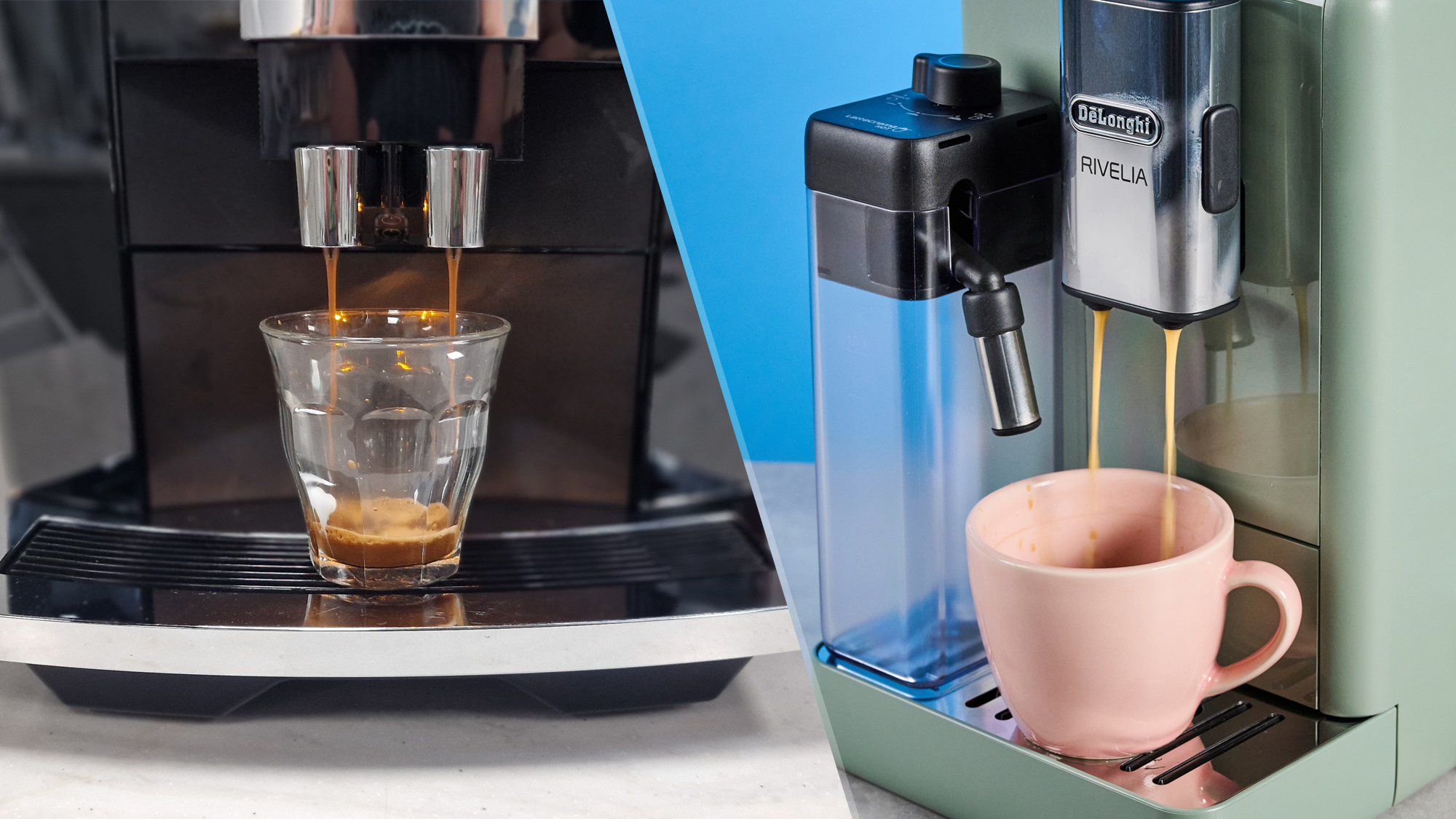
Both brands can produce a balanced shot with a stable crema from fresh beans. Jura’s strength is repeatability. Tap a drink, and it handles dosing and extraction for a consistently great result, which is why it suits households that want the same espresso or cappuccino every morning without fuss.
Get instant access to breaking news, the hottest reviews, great deals and helpful tips.
Another major perk we've consistently found with Jura machines is how quiet and mellow the grinding process sounds. When dispensing coffee, your mug is illuminated for a luxurious feel.
De’Longhi’s recent superautomatics, including Rivelia, have narrowed the gap in consistency. You still get slightly different flavour profiles between lines, with many De’Longhi machines skewing a touch stronger and hotter out of the box.
The important part is that, in both machines, you can quickly tailor strength, volume, and temperature on the front panel, then save that routine across drinks.
The Rivelia Automatic Espresso Machine brings barista-style coffee to your home at a touch of a button. It offers 16 drink options, two 250g hoppers, and customized to your tastes and schedules. What’s more, its slimline, attractive design will fit seamlessly into any kitchen. Choose from a range of colors including Onxy Black and Arctic White.
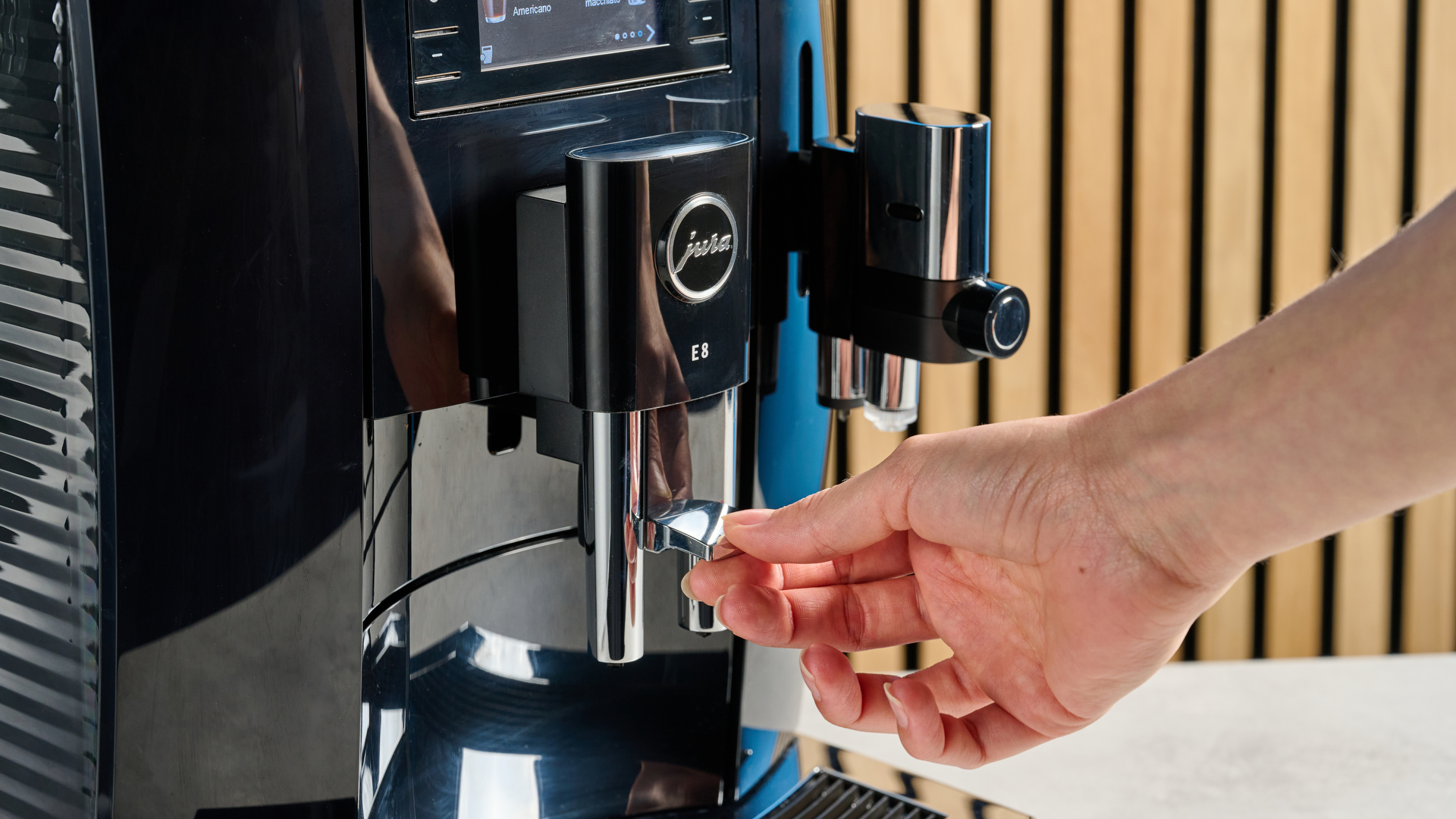
Our Senior Homes Editor, Millie, has tested a lot of superautomatics from both brands.
"If I were going purely for quality of flavor and money was no object, I'd buy myself a top-of-the-line Jura," she told me.
"You could get a better quality of extraction if you wanted to fiddle with the settings of a manual espresso machine, but for the tiny amount of input required, both Jura and De'Longhi offer fantastic tasting espresso which can also be customized for your specific preferences."
Jura vs De’Longhi: Grinders and beans
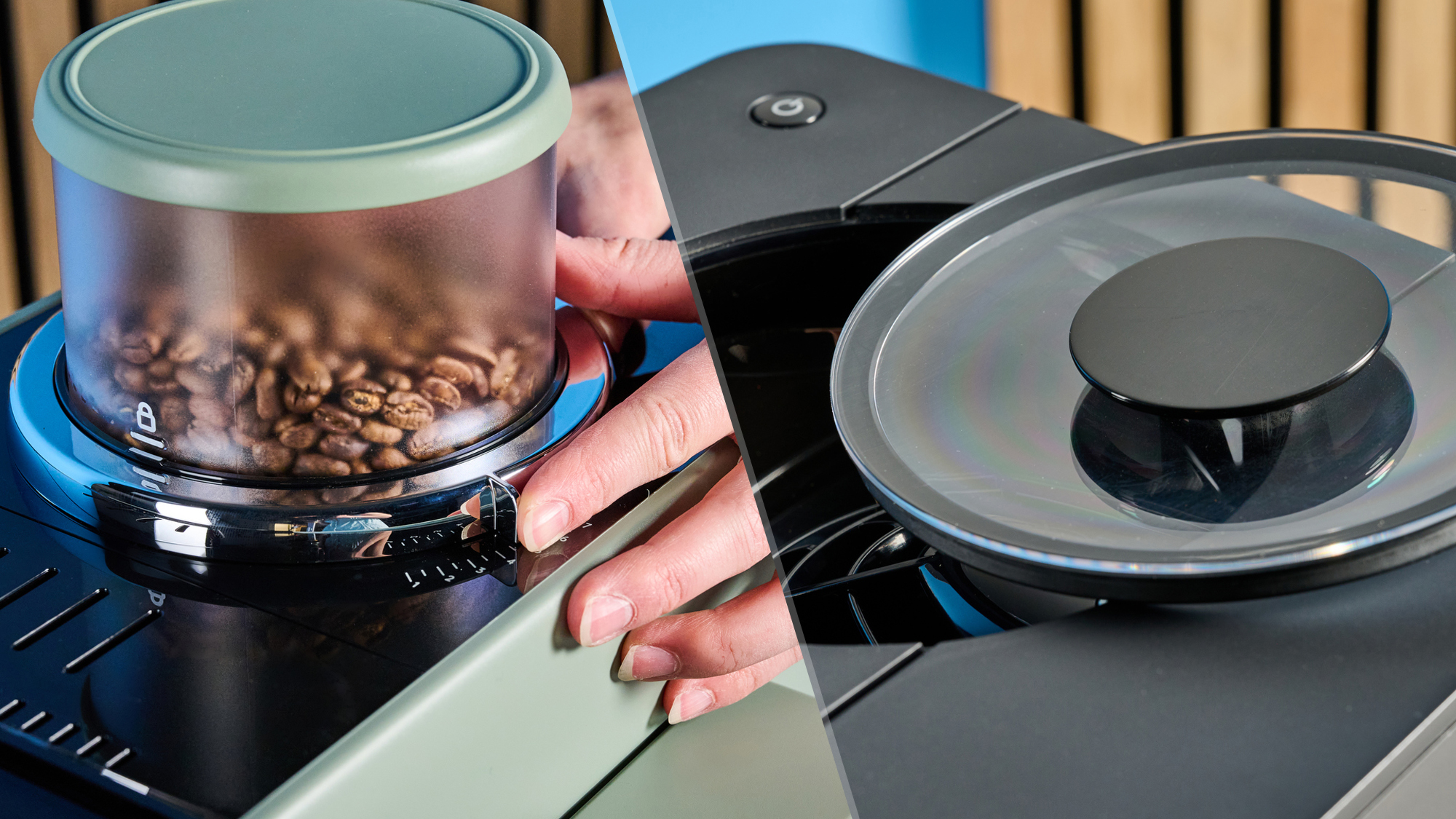
If you plan to switch beans often, check hopper capacity and ease of purging old grounds. Both brands handle this well, though Jura tends to feel a bit more sealed and refined in day-to-day use.
Jura uses fast, quiet conical burr grinders tuned for stability and speed. Strength and volume controls are clear, so dialing in to taste is straightforward, even if the grinder itself is largely set-and-forget. In terms of quality, you'll likely get a better quality result with a Jura. As mentioned earlier, the grind noise is low and feels incredibly smooth.
De’Longhi utilises conical burr grinders with on-machine strength and volume controls. The Rivelia’s UI makes it easy to tweak intensity and shot size across drinks, so you can get to your preferred profile quickly.
In a number of De'Longhi machines, including the Rivelia, you can switch between bean hoppers to experiment with different grinds and use decaffeinated coffee. The Jura Giga 10 also features this, but the machine is best used in professional settings.
Jura vs De’Longhi: Milk systems and specialty drinks
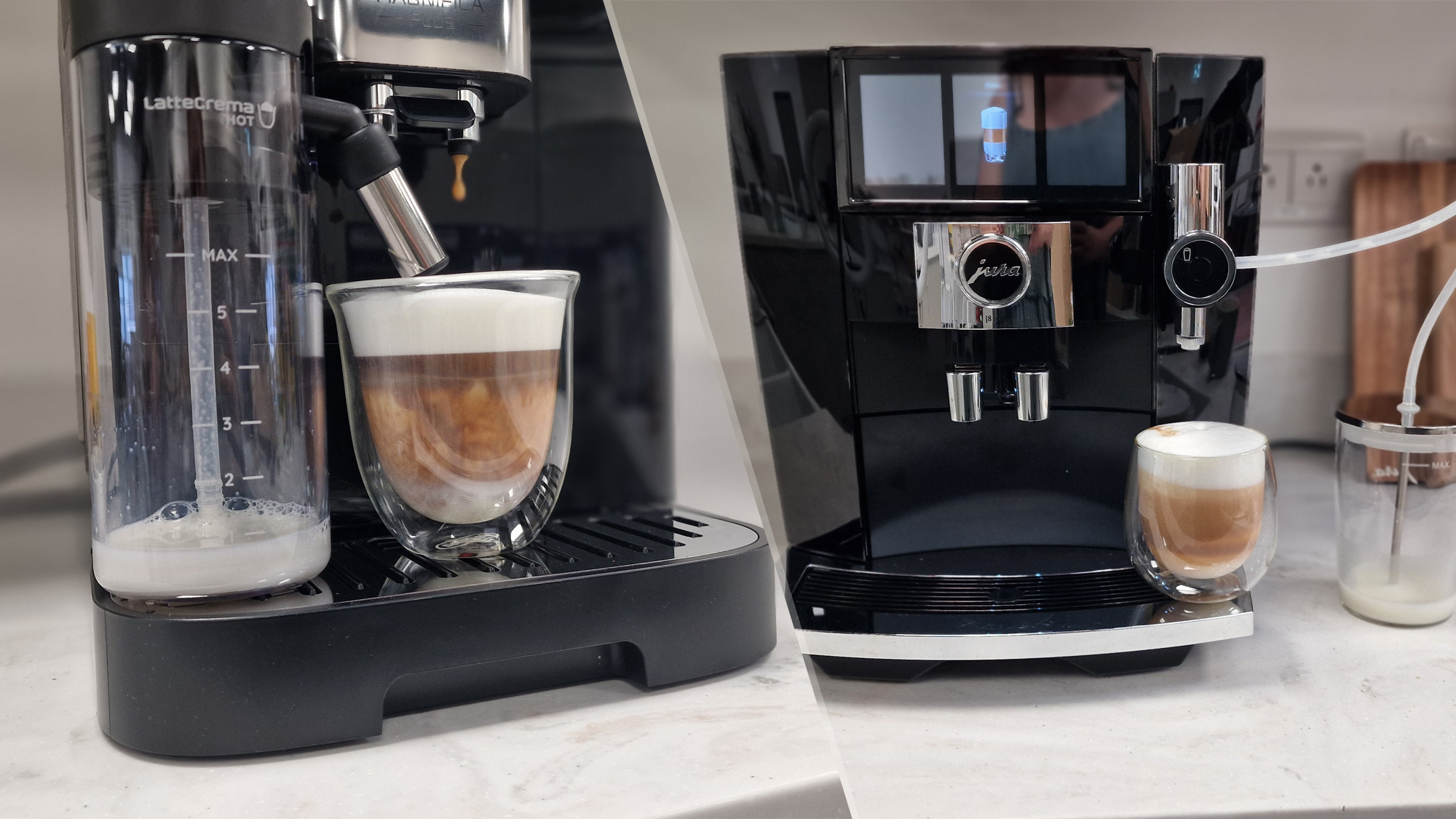
Most buyers care as much about milk drinks as straight espresso. Both brands offer automatic milk systems that draw from a carafe or container and dispense directly into your cup.
Jura provides you with smooth, refined foam, offering clear control over milk volume and timing for each recipe. You can create longer lattes or drier cappuccinos reliably, although you cannot replicate the texture of milk like a barista or fine-tune the microfoam density on the E8.
"I really enjoy the milk dispensing on offer from all Jura machines," Mille told me. "It's light and cloud-like, which is impressive for milk which hasn't been steamed."
It's also worth noting that a number of Jura machines, such as the J8 Twin, feature sweetener dispensers which infuse milk with flavored syrup, which is ideal for lovers of a vanilla latte. When Millie got hands-on with this feature, it became an immediate guilty pleasure.
The Jura line rarely goes on sale, but can be bought at Williams Sonoma, which is an indication of how well-regarded this brand is. The J8 is one of the most popular machines, loved for its interactive touchscreen and double dispensing capabilities for milk or espresso drinks.
De’Longhi, meanwhile, offers broad drink menus and reliable foam via automatic carafes across its Magnifica, Dinamica, and Rivelia models. The foam is pleasing and consistent for everyday lattes and cappuccinos.
On the lower end of the De'Longhi range you'll find machines which allow you to hand-steam. This is included in the Dinamica, for example. This will be a plus for some, but if you want a full superautomatic experience, you should go for something with a milk dispenser like the Magnifica.
Both brands offer a great range of milk-based drinks. If you value the texture of milk above all else, Jura would be a smart choice, whereas for the money, De'Longhi machines also offer excellent texture and steaming.
Jura vs De’Longhi: Speed, ease of use, and noise
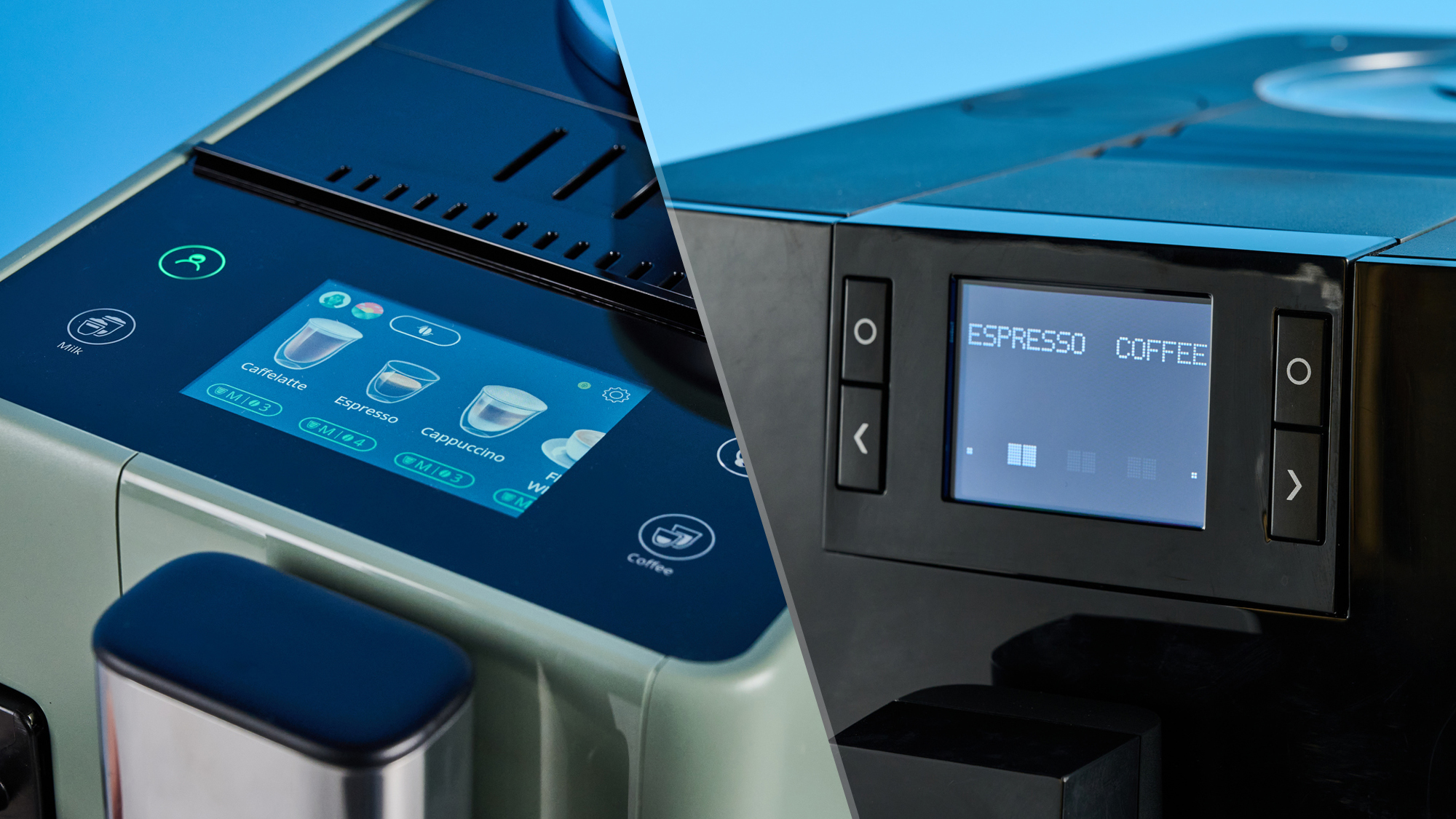
Speed matters when you are making two cortados before a commute.
Jura boasts quick heat-up and short gaps between drinks. The E8’s interface is clean and logical, so one-touch drinks feel genuinely one-touch. Pump and grinder noise are present, but well-managed for a superautomatic.
De’Longhi has a competitive warm-up and drink-to-drink times. Rivelia’s touchscreen guides you through selection and customisation clearly, making it friendly for first-time owners as well as anyone coming from a pod machine.
Both brands will let you add features such as tailored profile preferences at the higher end of their lines, but on the lower end, De'Longhi machines offer a more tactile interface with pictures of the drink options, whereas Jura machines look a little more retro.
Jura vs De’Longhi: Maintenance and durability
Every super-automatic needs regular rinses, descaling, and the occasional deeper clean.
Jura relies on guided maintenance with automatic rinse programs and filter-forward water care, which reduces the frequency of descaling. The upside is low day-to-day effort. The trade-off is cost, since branded filters and cleaning products add up over time.
On the De'Longhi side, many praise the brand for straightforward cleaning and easy access to parts that need attention.
Running costs are usually lower, and parts are widely available across the range.
Both brands are European, but De'Longhi has a stronger presence in the U.S., so will likely be available to assist with troubleshooting. With that being said, Jura offers a strong warranty in case of defects
Jura vs De’Longhi: Design, footprint, and build
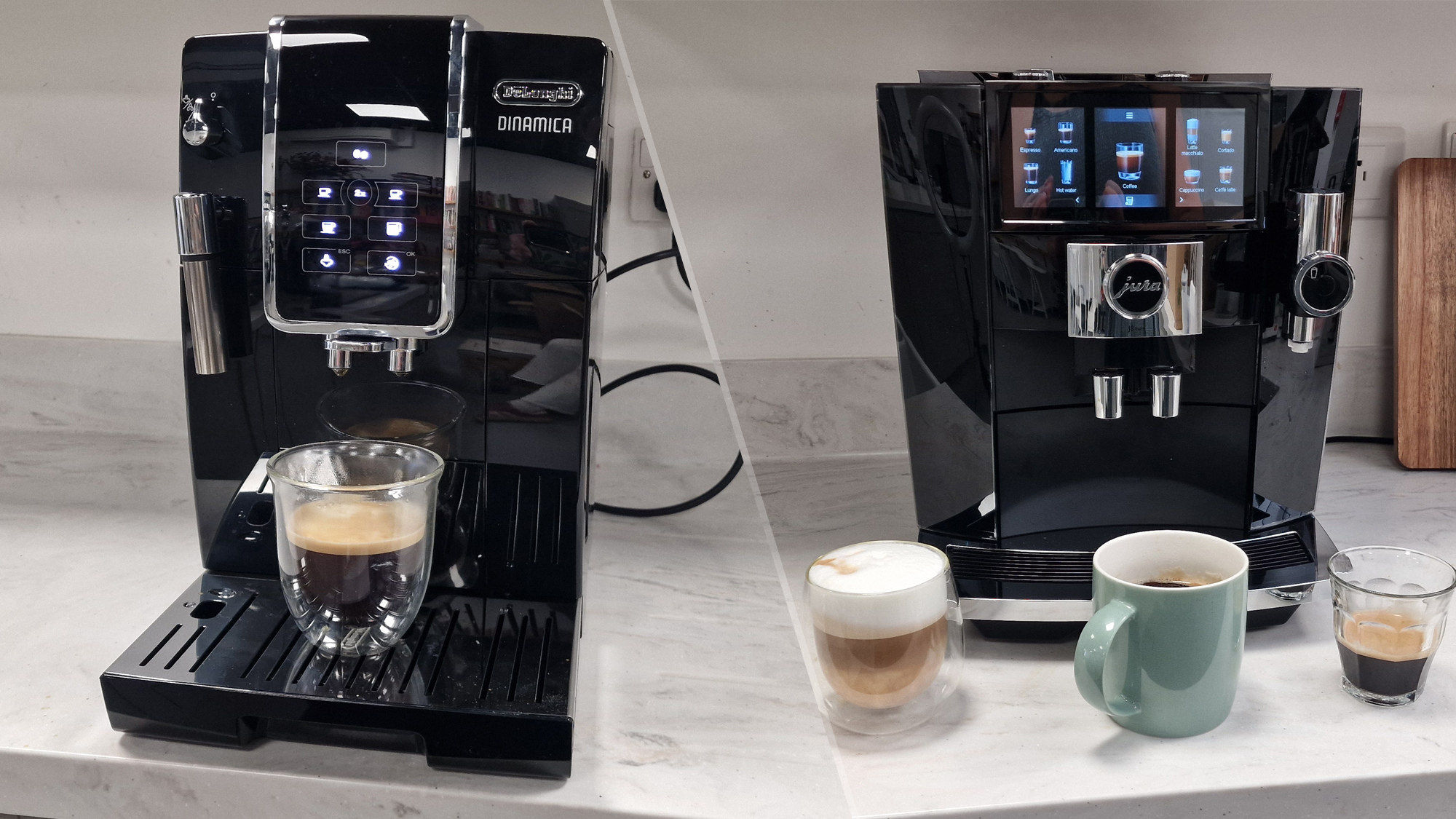
Aesthetics and size are practical considerations if counter space is tight.
Jura’s machines are designed to look premium, with clean lines and a cohesive finish that fits a modern kitchen. They offer curved, sculptural features and textured water containers which add an elevated look to a kitchen counter.
The Jura E8 appears and feels like a luxury appliance, boasting cohesive finishes and a sturdy build that suits a visible countertop. It presents as a statement piece as much as a coffee machine.
De'Longhi incorporates more plastic into its designs to keep prices accessible, with compact footprints in the Magnifica and Dinamica ranges and more expansive interfaces as you step up to Rivelia and beyond.
However, the more recent Rivelia line introduced a matte finish and differnt color options to the range, which feels modern and could be a compelling feature for more trend-driven shoppers.
With both brands, you get what you pay for. If you want a machine that can tuck under cabinets and still open for refills, check dimensions carefully either way.
Jura vs De’Longhi: Smart features and customisation
Higher-end super-automatics, such as the Jura E8, include programmable drinks, user profiles, and precise control over milk and coffee volumes.
If you want to save a favourite recipe for each member of the household and get the same result every time, the E8 makes that straightforward.
You'll find broad preset menus that are easy to customise on a De'Longhi machine. The Rivelia focuses on approachable, tactile control of strength, volume, and milk without adding complexity.
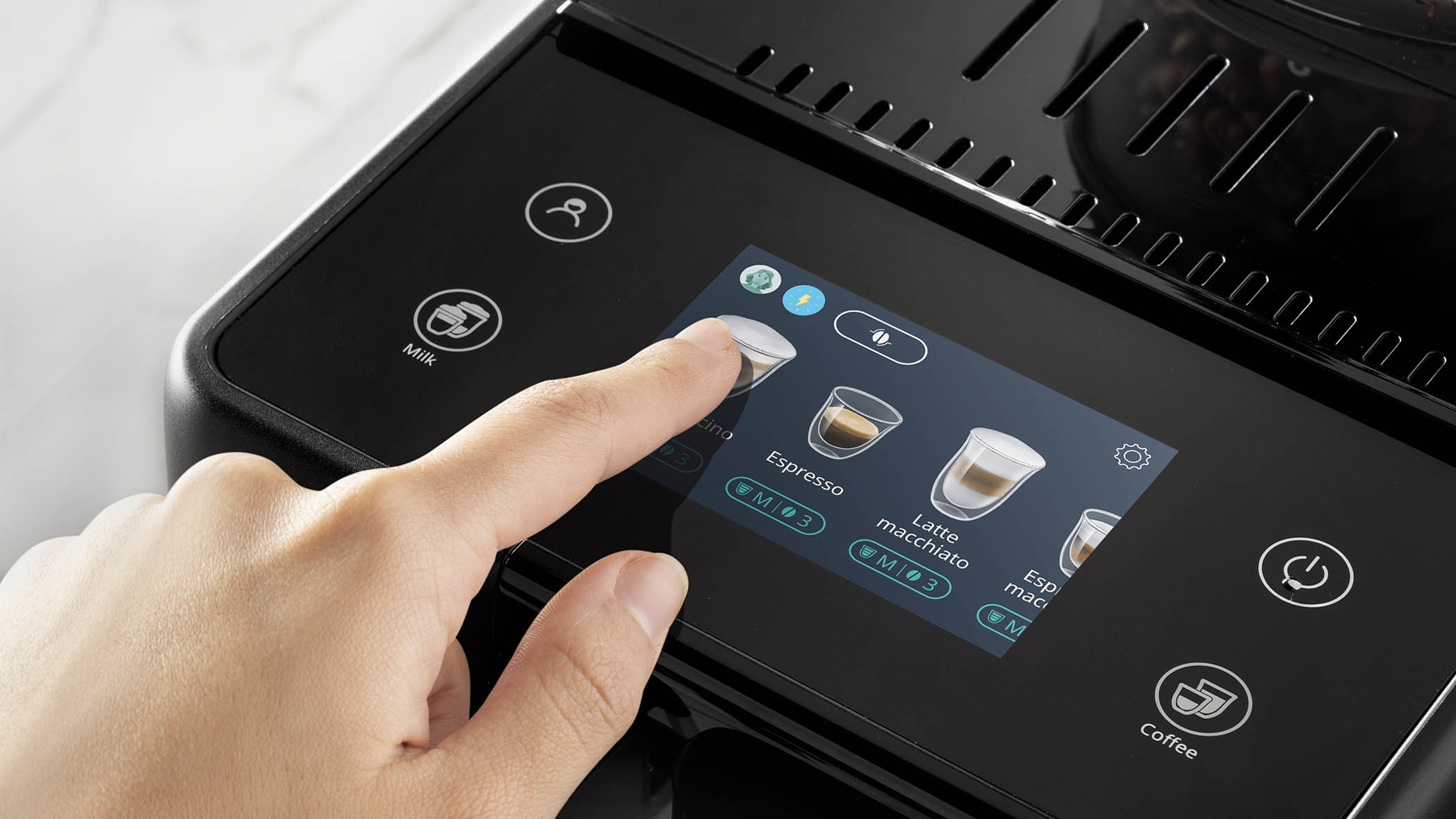
Jura vs De’Longhi: Which should you buy?
- Buy Jura if you want one-touch perfection with minimal tinkering, a premium build that looks at home on a designer countertop, and consistently excellent espresso and milk drinks with very little effort.
- Buy De'Longhi if you want a true bean-to-cup machine at a friendlier price, with an interface that makes customisation easy and an automatic milk system that gets you café staples without the learning curve.
If convenience and consistency are top priorities, Jura’s lineup remains the safest bet. But as it's a European brand, prices are very inflated in the U.S. market.
If you want most of that experience for less, the De’Longhi line can get you very close. De’Longhi’s broader range makes it easier to match your budget without sacrificing the key bean-to-cup benefits.
More from Tom's Guide

Caroline is a freelance writer and product tester, previously working in roles such as smart home editor across various titles at Future, including Livingetc, Homes & Gardens, and TechRadar. As a technology and lifestyle expert, Caroline specializes in smart home tech, appliances, and more. She currently operates out of her cozy Suffolk apartment and is more dedicated than ever to helping people find the best products for their own homes.
You must confirm your public display name before commenting
Please logout and then login again, you will then be prompted to enter your display name.
